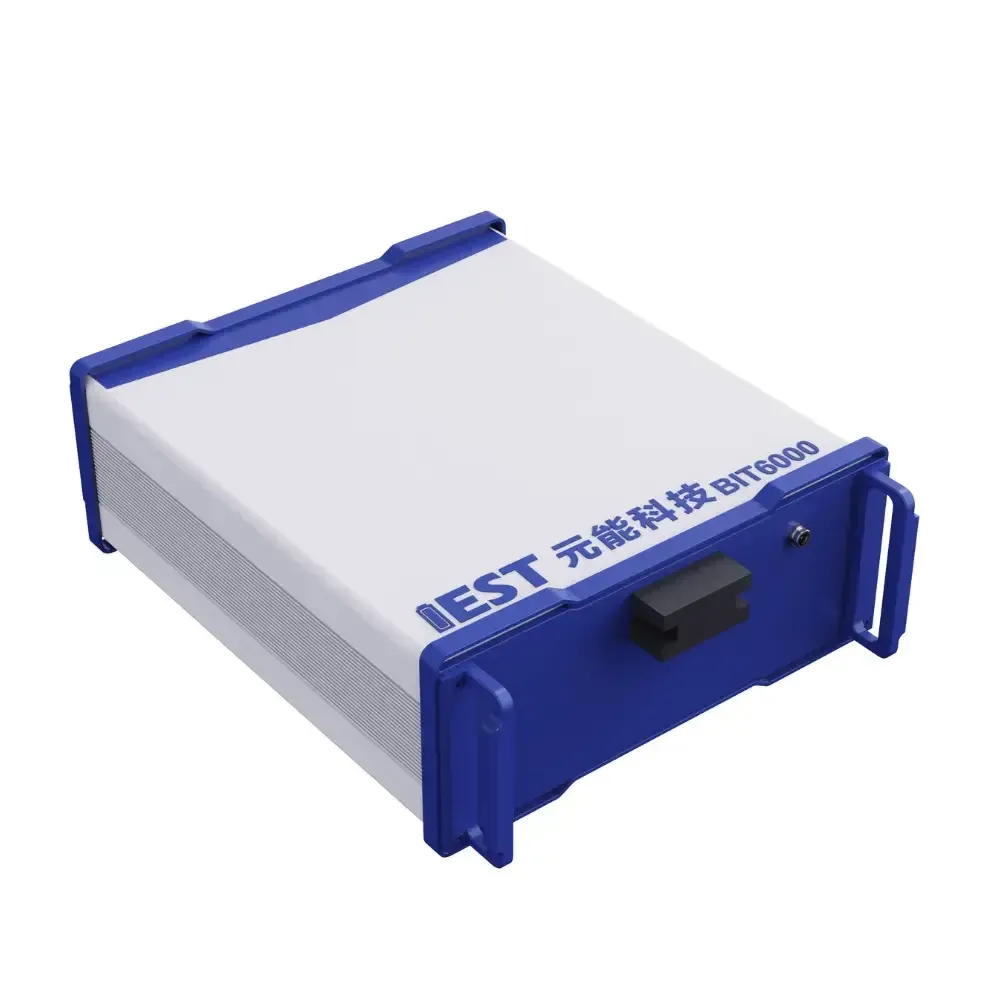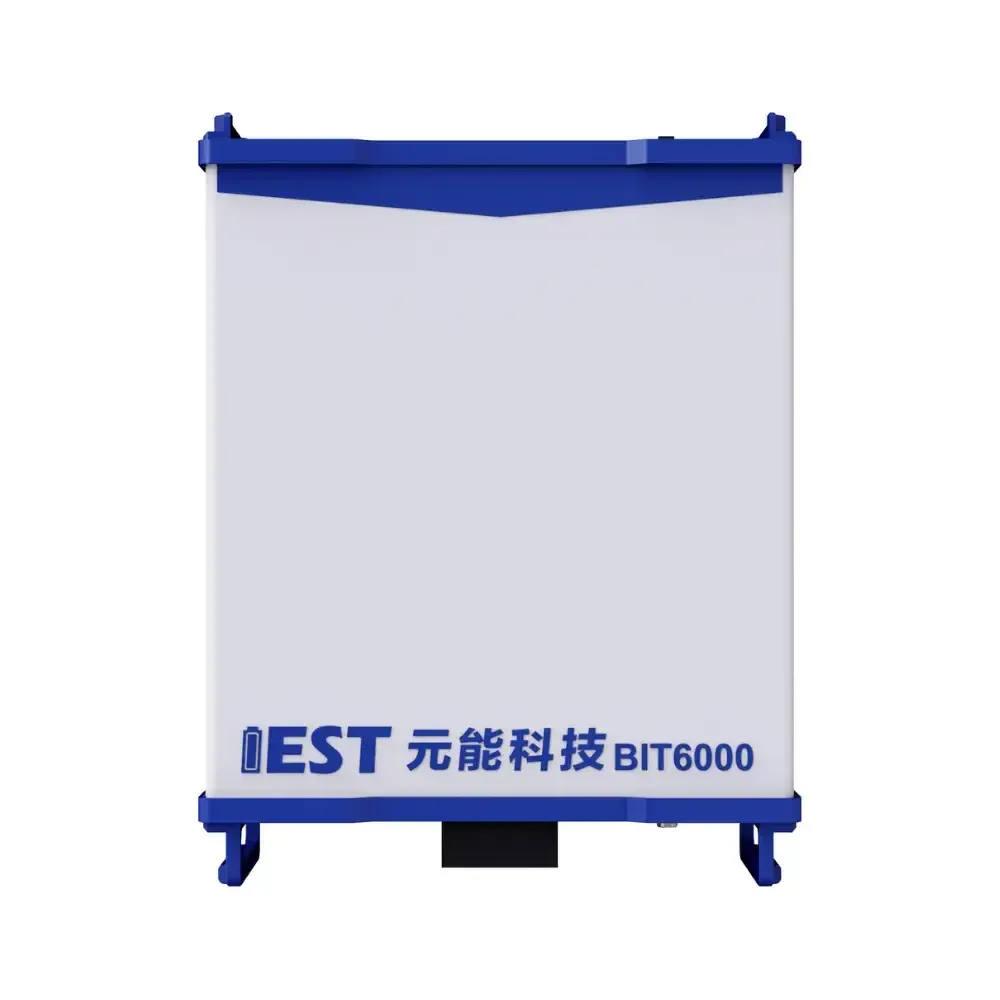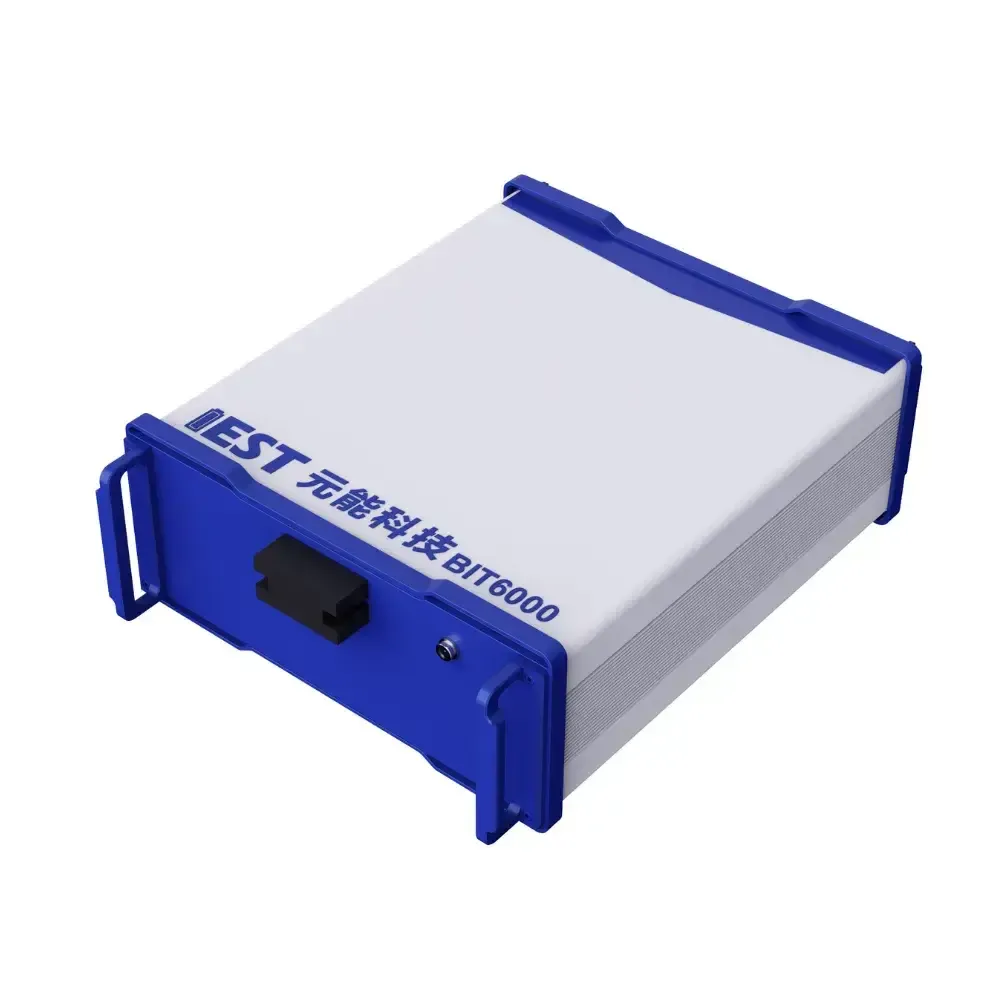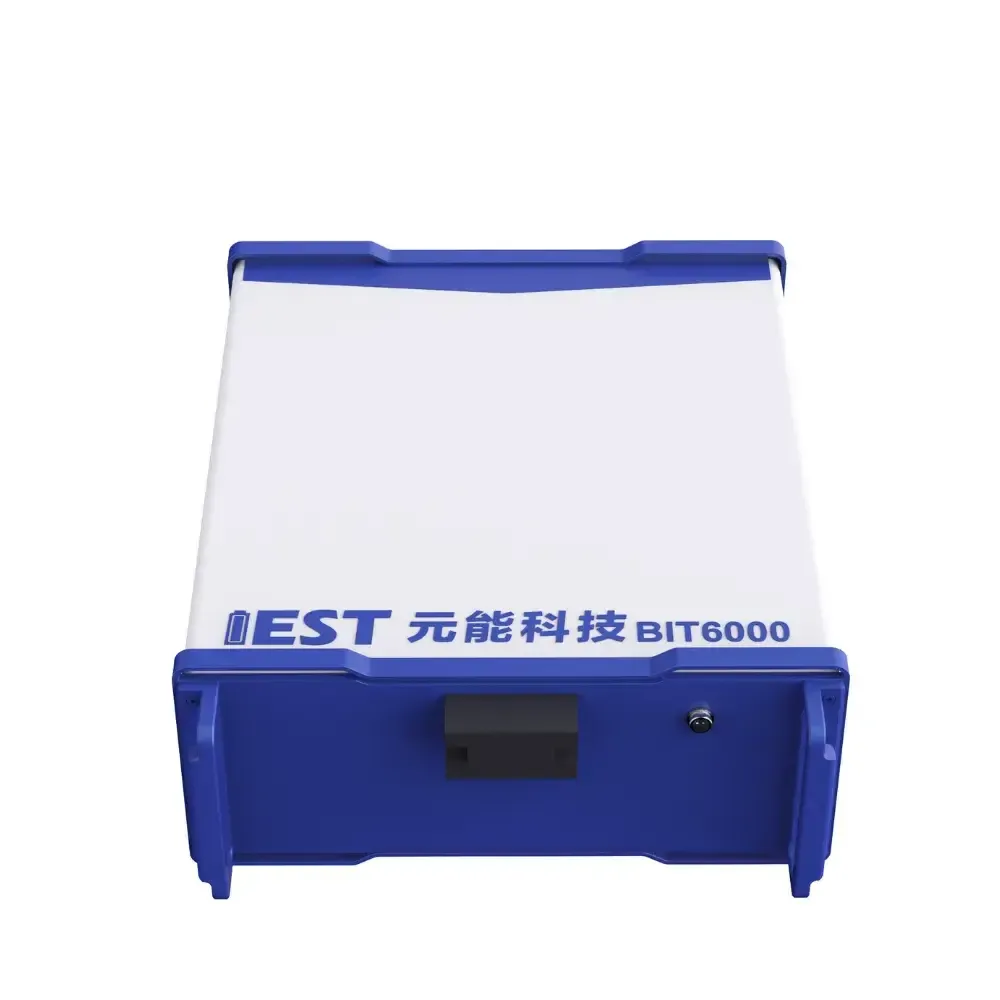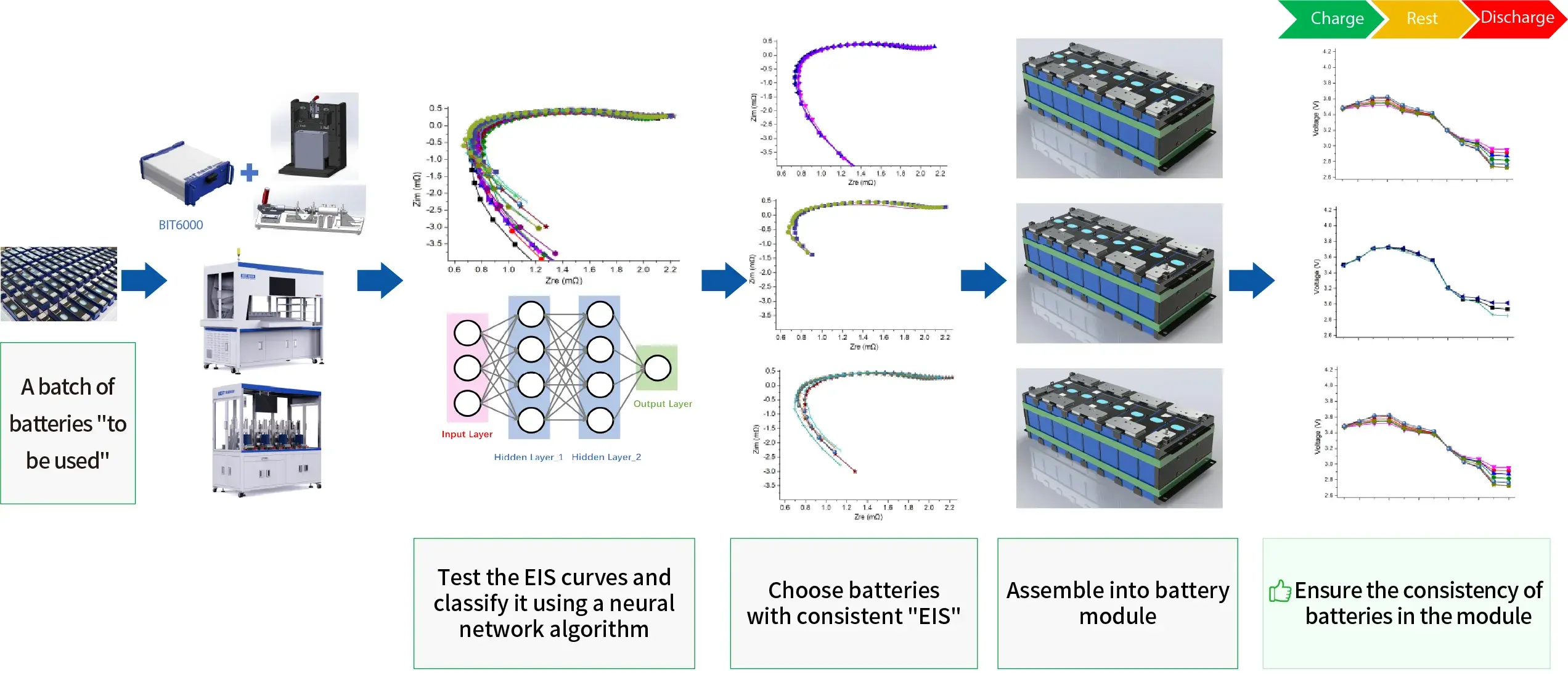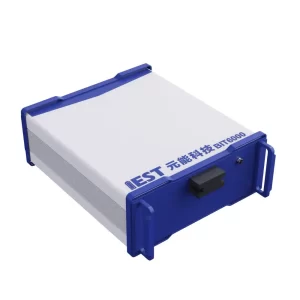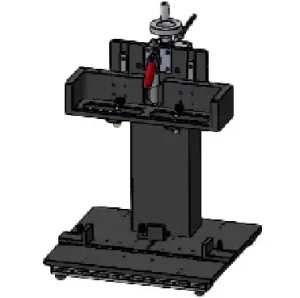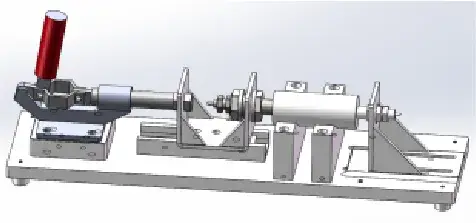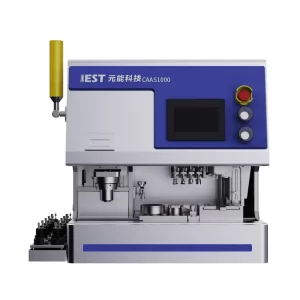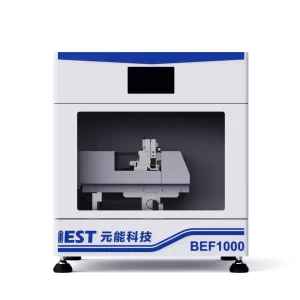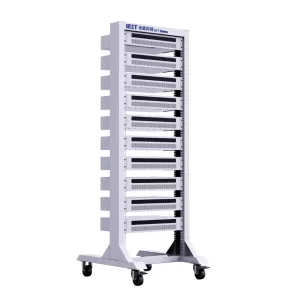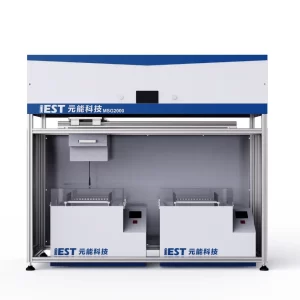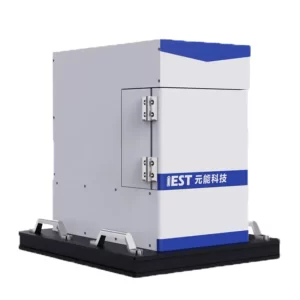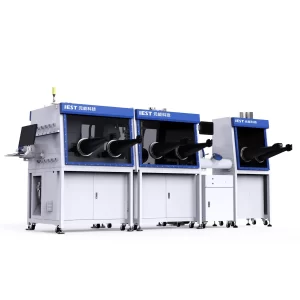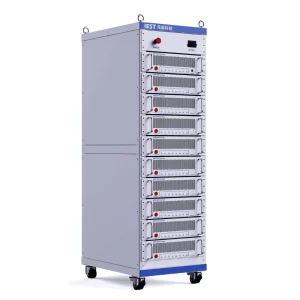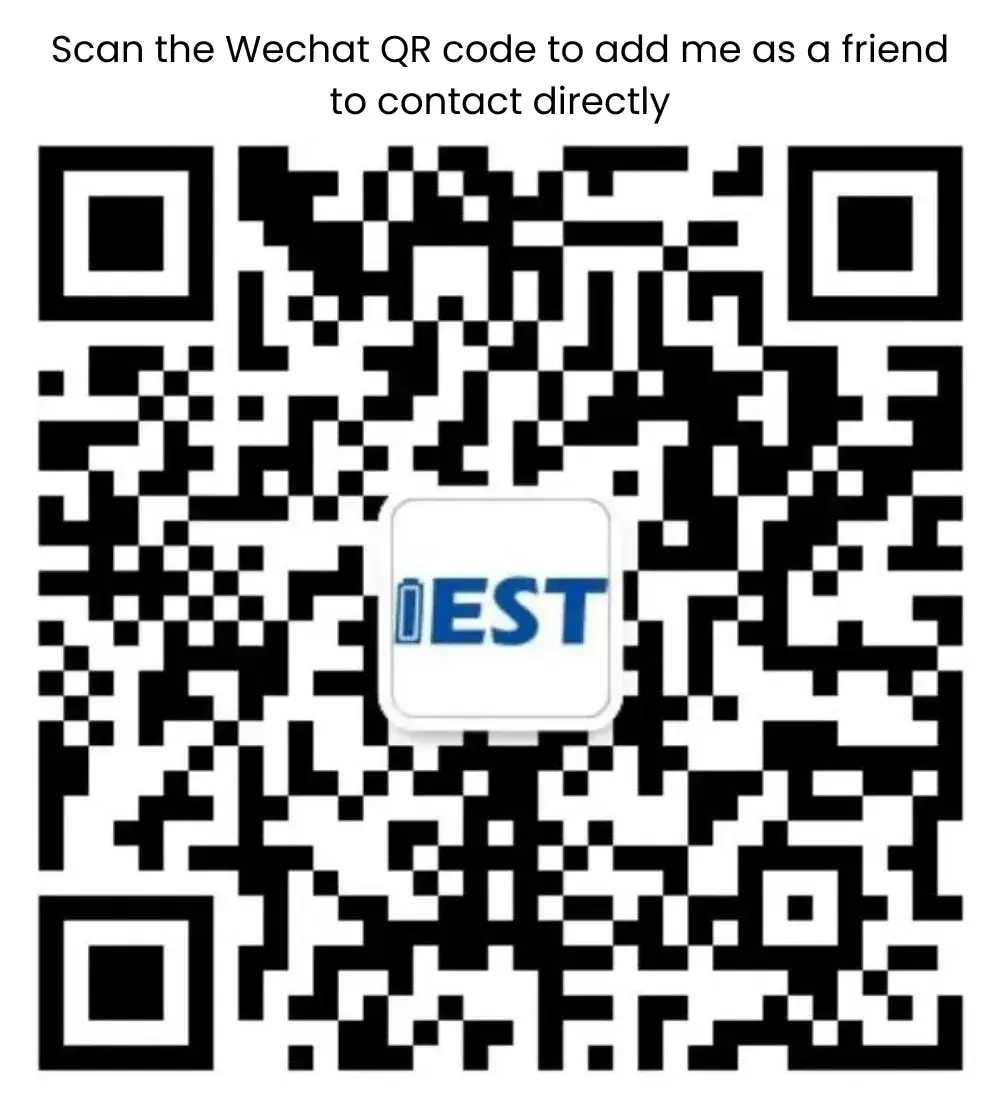Description
1. Background and significance of battery cell consistency testing before shipment
In new energy vehicles or energy storage power stations, lithium batteries are often used in the form of multiple paralel modules or packs. Therefore, high consistency requirements are placed on the battery cells in the same module or pack. Otherwise, thermal runaway may occur easily due to overcharging/overdischarging of a certain battery cell, leading to many after-sales problems.
Electrochemical impedance spectroscopy (EIS) has good sensitivity and correlation with the SOC, SOH, internal temperature, internal short circuit, etc, of the battery celll. By usine fast EIS testing and neural network algorithm modeling, you can effectively screen the consistency othe battery cells and help the cascade utilization of the battery cells.

2. Creative Solution
Electrochemical impedance spectroscopy (EIS) can be used to characterize the resistance of electrochemical processes with diferent time constants. Introducing EIS testing betore battery shipment or after battery delivery, and comparing the impedance differences between diferent batteres, can (1) screen the consistency of batteries; (2) find abnormal batteries; (3) help analyze the failure mechanism of batteries!
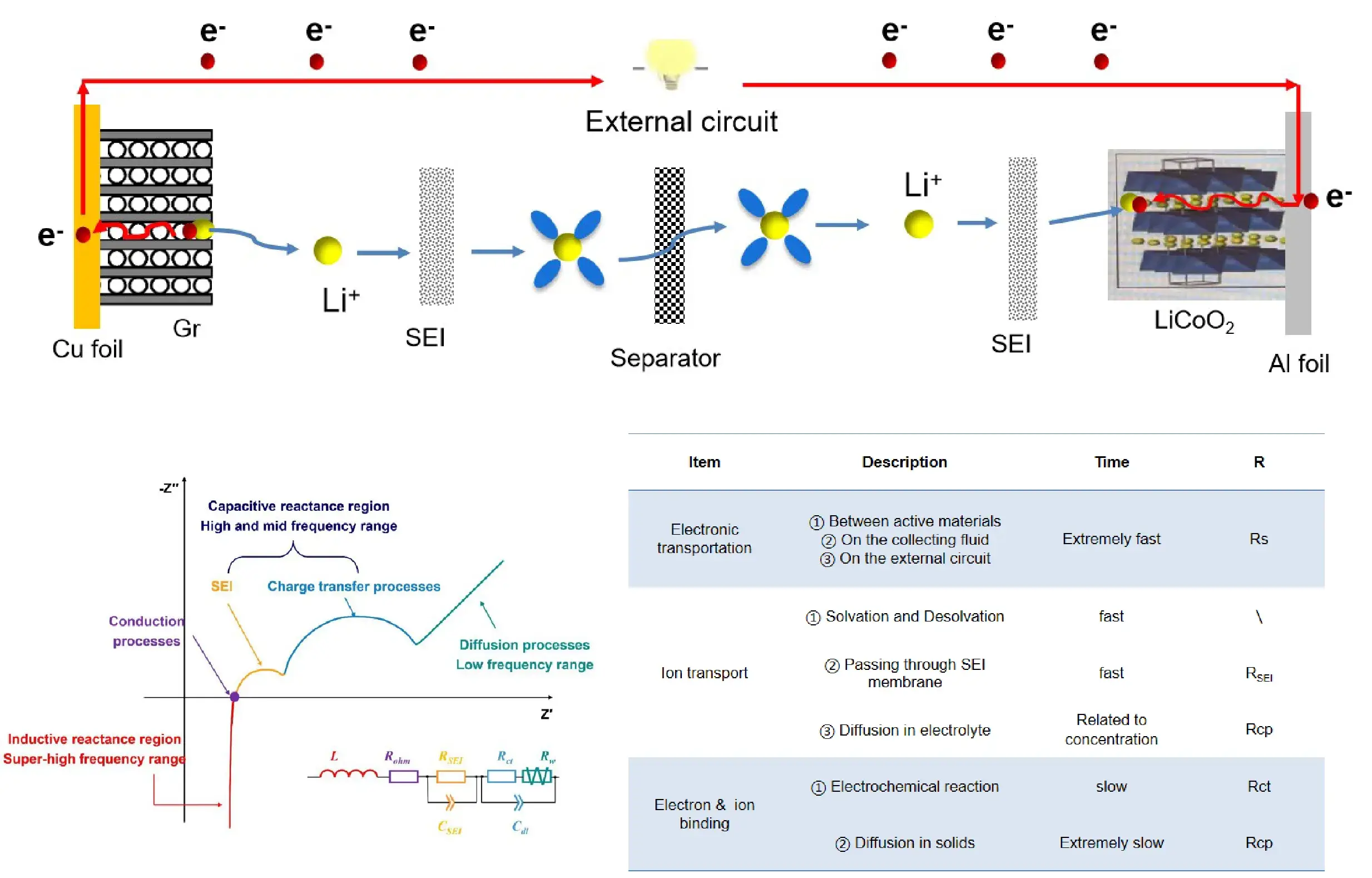
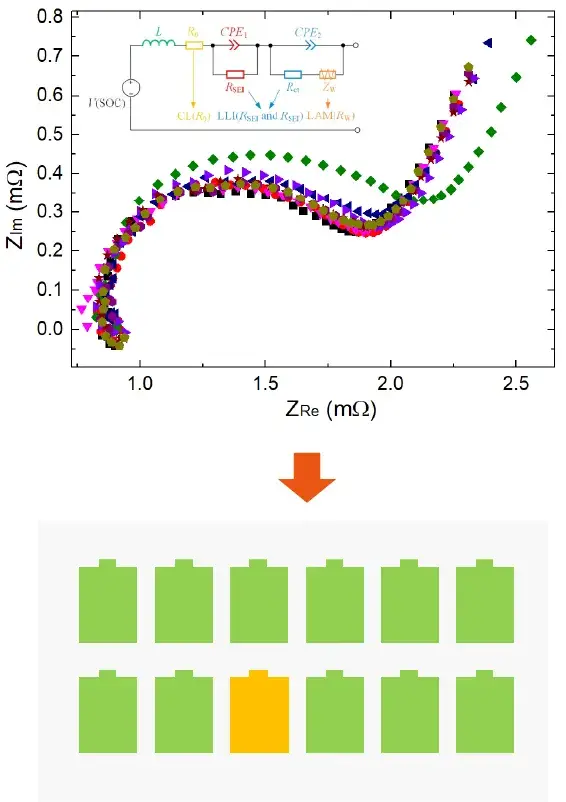
3. BIT6000 Introduction
Functions & Features:
① Wide range of applicable cells, ranging from 1Ah to 1000Ah;
② Fast EIS frequency sweep testing, with a frequency rangeof 1500Hz~0.1Hz;
③ Equipped with OCV testing, DCR testing, constant currentcharge-discharge testing, etc.;
④ Battery Consistency Screening;
⑤ Dynamic fitting screening algorithm for batch screening.

Applications
1. Application scenario
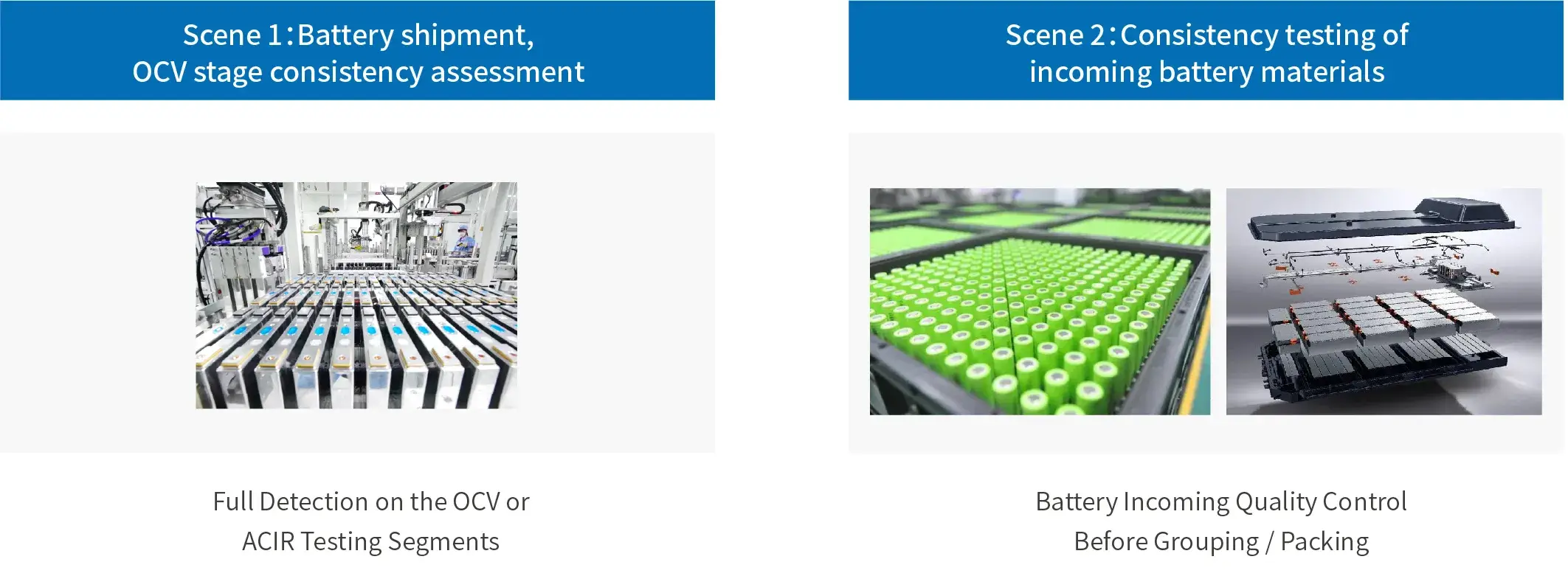
2. ElS Test of Battery With Large Capacity & Low Internal Resistance.


3. Case 2
3.1 EIS screening is conducted on 30 prismatic cells with a capacity of 50Ah each (at 50% state of charge) over a frequency range from 1500Hz to 0.1Hz.
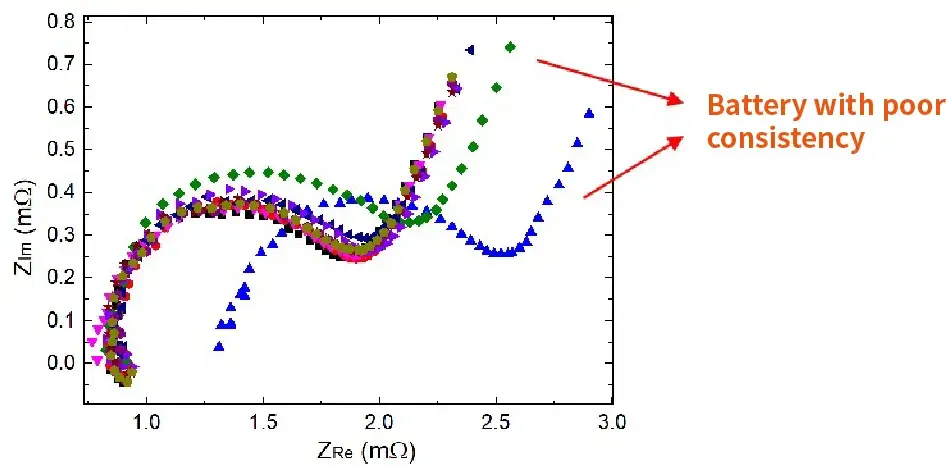
- Especially for the battery represented by the green line, its impedancein the high-frequency region is consistent with other batteries, and only the impedance in the medium and low-frequency regions has a large difference. In this case, if only the electronic resistance or 1000Hz impedance is tested, it cannot be effectively distinguished, but swept frequency EIS can effectively screen and identify!
3.2 EIS screening is conducted on 40 cylindrical cells with a capacity of 30Ah each (at 6.5% state of charge) over a frequency range from 1500Hz to 0.1Hz.
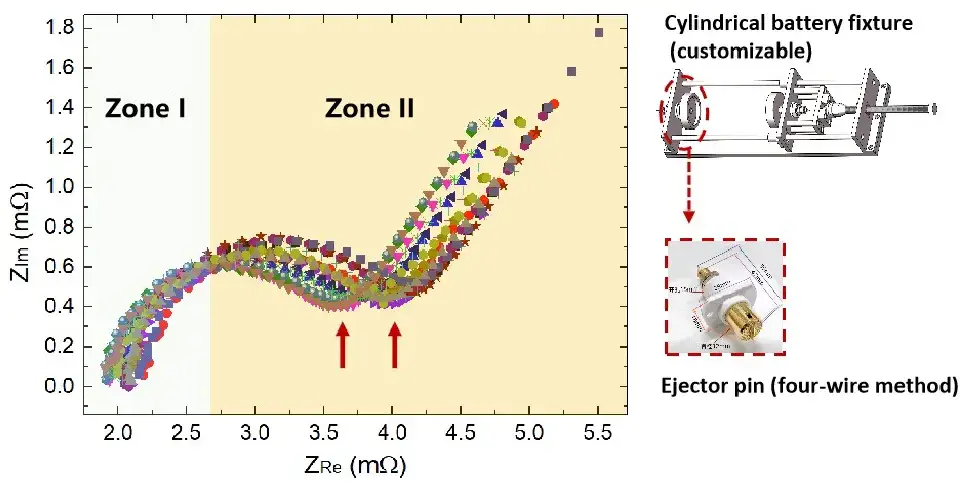
- In zone Ⅰ: For ohmic impedance and SEI impedance, the 30 batteries are distributed relatively concentratedly, with no obvious differences; In zone Ⅱ: Rct is divided into two concentrated areas, indicating that there are certain differences in the ionic impedance of the 40 batteries, which will affect the capacity after long cycles.
4. EIS Test Before Module Assembly (Battery Consistency Screening)
- For battery manufacturers producing and assembling modules/packs, EIS testing can be used to check the quality and consistency of battery in the same module/pack.
- For EV/energy-storage manufacturers sourcing batteries externally, EIS testing ensures incoming battery quality to maintain the consistency of battery in the same module/pack.
Traditional Battery Sorting Method:



